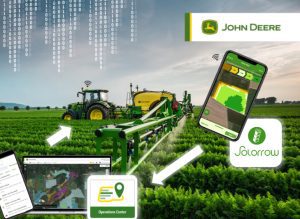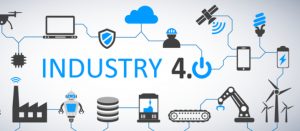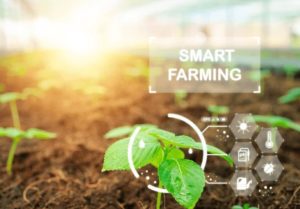In the ever-evolving realm of technology, the symbolic landscape of industries is undergoing a radical transformation. As we enter the New Year, it’s essential to recognize the profound impact of cutting-edge technologies on various sectors, drawing a parallel with the meticulous art of landscaping. Just as skilled gardeners shape and nurture a garden to yield a bountiful harvest, industries leverage advanced technologies to cultivate futuristic commercial landscapes. Let’s explore how technology is reshaping sectors like agriculture, manufacturing, and services, unveiling real-world examples that vividly illustrate the positive changes and challenges introduced by this digital revolution.

Agriculture: Precision Farming and Smart Harvesting
The infusion of precision farming and intelligent harvesting technologies has redefined the agricultural landscape. Precision farming employs sensors, GPS technology, and data analytics to optimize crop yields, reduce waste, and conserve resources. Farmers with real-time data on soil conditions, weather patterns, and crop health can make informed decisions, ensuring that each square foot of land is utilized to its maximum potential.
An example is the case of John Deere’s precision agriculture solutions. These integrated systems enable farmers to monitor and control farm machinery remotely, enhancing efficiency and minimizing environmental impact. Using sensors, farmers can precisely apply fertilizers and pesticides where needed, reducing overall chemical usage and environmental contamination. This improves the yield and promotes sustainable and eco-friendly farming practices.
On the flip side, challenges arise as farmers grapple with the initial costs of implementing such technology. However, the long-term benefits, including increased productivity and resource optimization, make it a worthwhile investment for those willing to embrace the change.

Manufacturing: Industry 4.0 and Smart Factories
In the manufacturing sector, the concept of Industry 4.0 has ushered in a new era of automation and connectivity. Smart factories leverage technologies like the Internet of Things (IoT), artificial intelligence (AI), and robotics to create a seamless and highly efficient production process. Machines communicate with each other, providing real-time insights into production metrics, inventory levels, and equipment health.
German multinational Siemens serves as a stellar example of Industry 4.0 in action. Its Digital Enterprise Suite integrates product design, production planning, and manufacturing operations in a unified digital environment. This results in a streamlined and agile manufacturing process, reducing time-to-market and enhancing overall product quality.
However, the integration of Industry 4.0 is challenging. Workforce upskilling, cybersecurity concerns, and the upfront costs of implementing these technologies pose hurdles for some manufacturers. Yet, those navigating these challenges are at the forefront of a more efficient, responsive, and competitive landscape.
Services: Artificial Intelligence and Personalization
Artificial intelligence is a game-changer in the services sector, particularly in areas like customer support and marketing. Chatbots and AI-powered virtual assistants are becoming ubiquitous, providing instant and personalized customer interactions. This improves customer satisfaction and frees up human resources to focus on more complex tasks.
Amazon’s recommendation engine is a prime example of AI-driven personalization. Amazon tailors product recommendations by analyzing user behaviour and preferences, creating a highly individualized shopping experience. This boosts sales and establishes a deeper connection between the brand and the consumer.
However, the rise of AI in services raises concerns about job displacement and ethical considerations surrounding data privacy. Striking the right balance between automation and human touch becomes crucial to ensure the continued evolution of a service landscape that is both efficient and humane.

Conclusion: Nurturing the Tech Harvest
As we venture into the New Year, it’s evident that technology is not just a tool but a transformative force shaping the very fabric of our commercial landscapes. The analogy of landscaping aptly captures the precision, care, and vision required to cultivate a prosperous future. From the fertile fields of precision agriculture to the humming assembly lines of smart factories and the personalized interactions in the services sector, technology is the invisible hand guiding industries toward a more efficient, sustainable, and customer-centric future.
While challenges persist, the success stories of pioneers in these fields underscore the immense potential for positive change. Embracing these technological shifts requires a mindset akin to a seasoned gardener that recognizes the need for adaptation, continual learning, and a commitment to nurturing the seeds of innovation.
The tech harvest is ripe for the picking in the grand tapestry of industries. As we navigate this evolving landscape, we must tread carefully, mindful of the delicate balance between progress and preservation. The New Year beckons us to sow the seeds of innovation, tend to them with diligence, and reap the rewards of a commercial landscape transformed by the boundless possibilities of technology.